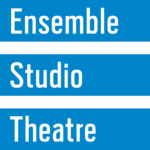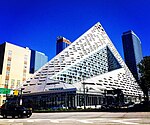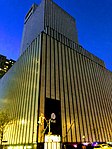DeWitt Clinton Park

DeWitt Clinton Park is a 5.8-acre (23,000 m2) New York City public park in the Hell's Kitchen neighborhood of Manhattan, New York City, between West 52nd and 54th Streets, and Eleventh and Twelfth Avenues. The park, which was one of the first New York City parks in Manhattan on the working waterfront of the Hudson River, is named for DeWitt Clinton, who had created a business boom of Hudson commerce when he opened the Erie Canal. It is the biggest city park in the neighborhood, and since 1959, the neighborhood has frequently been referred to as "Clinton". It is the only park on the west side of Manhattan to have lighted ball fields. The park was the first community garden in New York City.
Excerpt from the Wikipedia article DeWitt Clinton Park (License: CC BY-SA 3.0, Authors, Images).DeWitt Clinton Park
11th Avenue, New York Manhattan
Geographical coordinates (GPS) Address Nearby Places Show on map
Geographical coordinates (GPS)
| Latitude | Longitude |
|---|---|
| N 40.768211111111 ° | E -73.994302777778 ° |
Address
11th Avenue 737
10019 New York, Manhattan
New York, United States
Open on Google Maps








